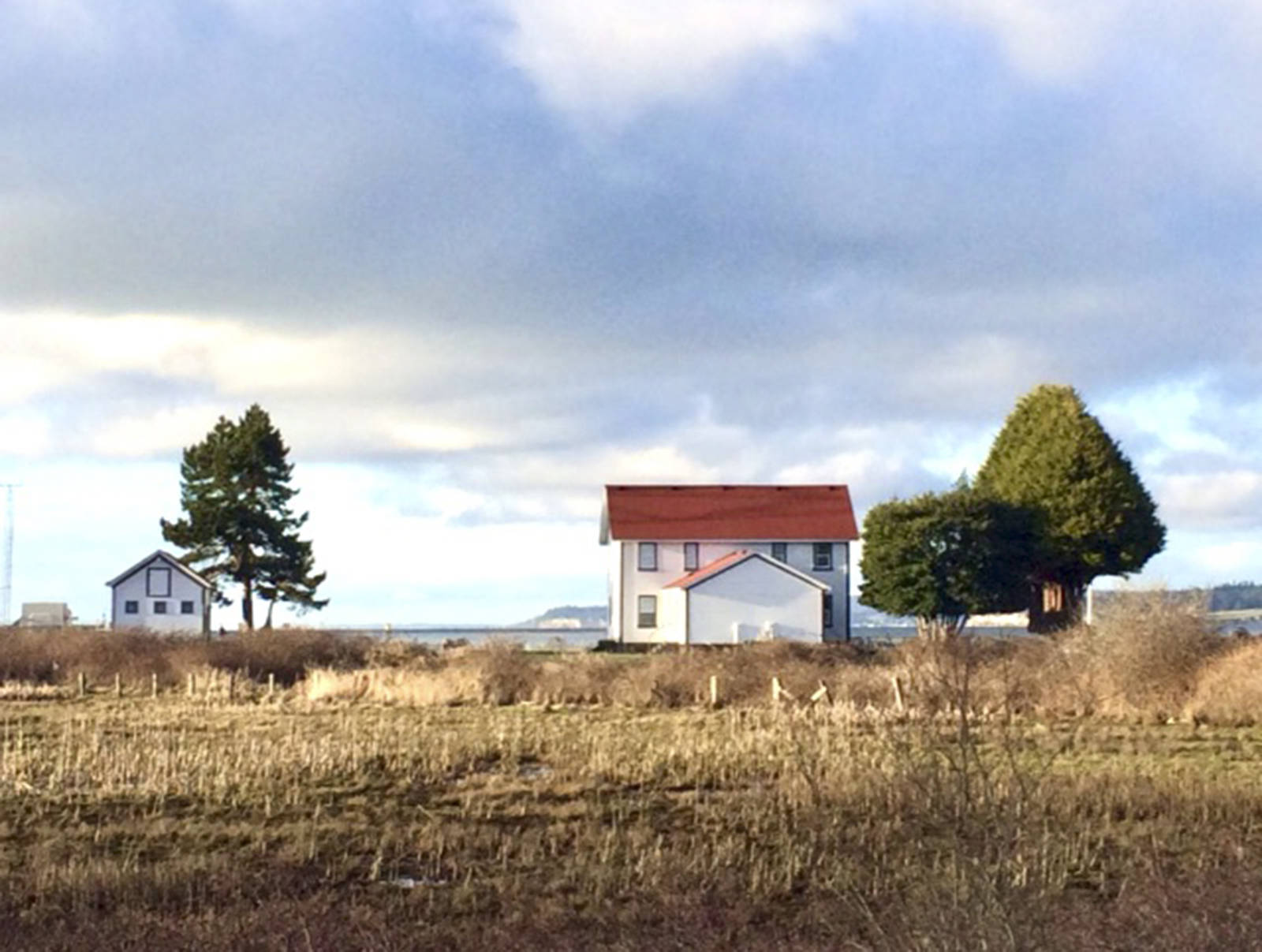Plans are in place to restore of the 32-acre Point No Point freshwater wetlands in Hansville to a saltwater marsh in order to create a habitat for juvenile Chinook salmon.
The malfunctioning tide gate would be removed, and a channel to Puget Sound on the eastern shore created.
Mid Sound Fisheries Enhancement Group, a Seattle nonprofit that works with landowners and conservation groups to help with projects that benefit wild salmon, is holding a series of Zoom meetings with residents to explain the project and listen to their ideas and concerns, answer their questions, and get them on board.
Juliana Tadano, Mid Sound’s Nearshore Restoration project manager, reports that it already has the cooperation of the tribes, North Kitsap Puget Sound Anglers and the Audubon.
The Point No Point Estuary Restoration Project has been in the design stage for a few years, and still is, but this is the first time most Hansville residents have heard about it. If all goes as planned, completion is expected in 2025.
The wetlands were originally connected to Puget Sound by streams that wound through the marsh. When the lighthouse was built in the late 1800s, the marsh was diked. In the 1950s a tide gate was installed to further isolate the land from saltwater, but the gate has been in disrepair since the 1990s, Tadano said.
The preliminary plan is to construct a levee about 4- to 5-feet high on the north edge to protect the Point No Point Road from flooding. A boardwalk along the levee for pedestrians is being considered. The site would be dredged, channels dug and plants replaced by natives that thrive in saltwater. Planners believe that the channels will provide habitat for birds and other wildlife, and for forage fish, important to the salmon and shorebirds.
Hillview Lane may be raised, depending on where the restoration ends. A bridge would be built over the outlet to the Sound so that people can get to the other side of the beach. Seattle-based Blue Coast Engineering is doing that feasibility study, and Mid Sound has been awarded various grants to help develop the project.
The tidal marsh would be a critical habitat for salmon, which begin life in freshwater then spend their first months in sheltered coastal saltwater areas, where they feed and grow before heading to sea. But more than 95% of nearshore habitat in Puget Sound is gone.
Despite the benefits of the project, there are some concerns. For example, there is no plan to deal with the increased traffic and limited parking should this attract more visitors to the park. Residents worry about flooding should the levees give way in an area that has long had such problems. They hope planners have considered the extreme tides, violent storms and strong winds in this area, which leave behind large logs and sediment, which could block the sea access or overfill the channels.
For details go to www.midsoundfisheries.org/project/pnprestoration or contact Tadano at juliana@midsoundfisheries.org.



